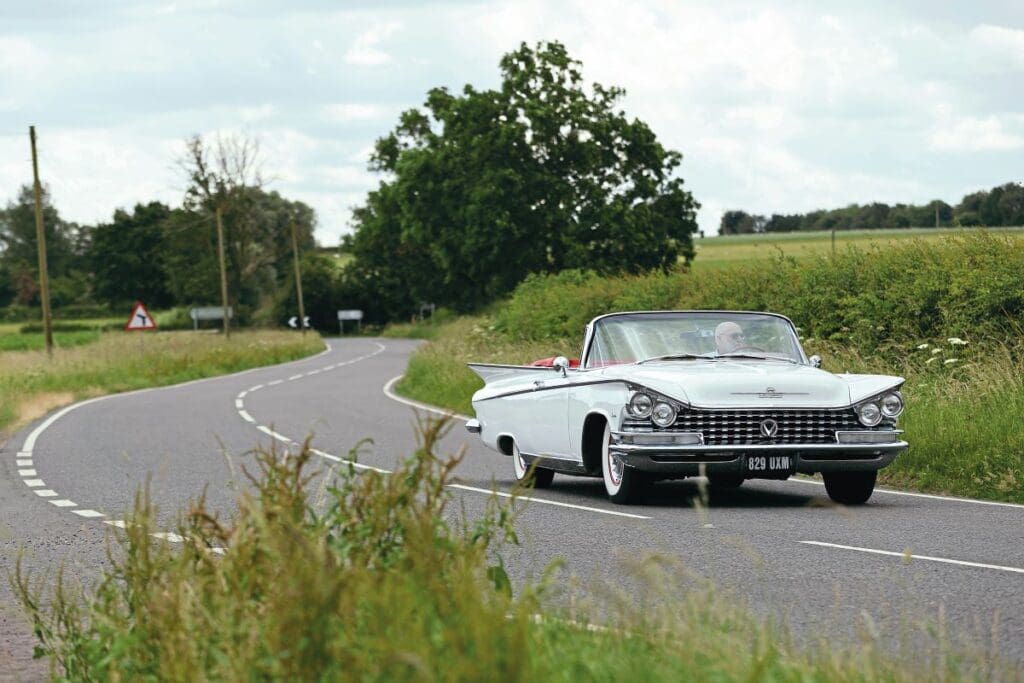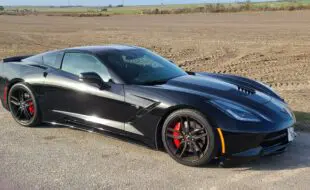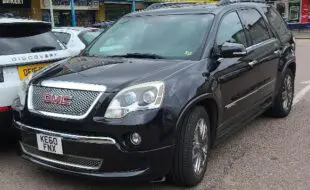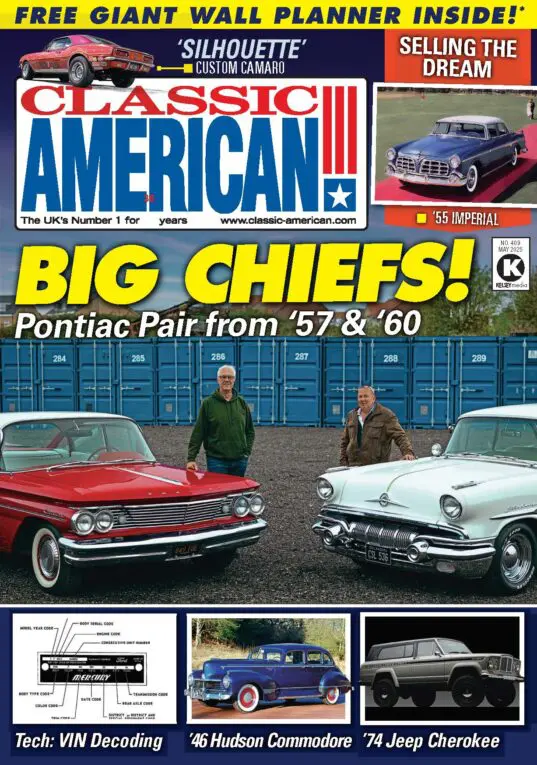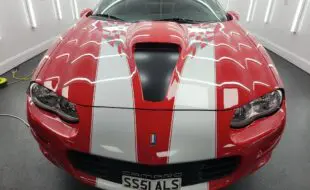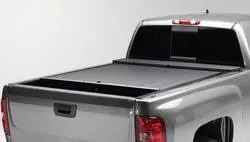The ’59 Buick was one of the finest examples of Fifties automotive design, but it has never had a great following in Britain. Jon Gillman is an exception. He has kept three on the road, and his latest restoration is one of the very best, as Zack Stiling discovered…
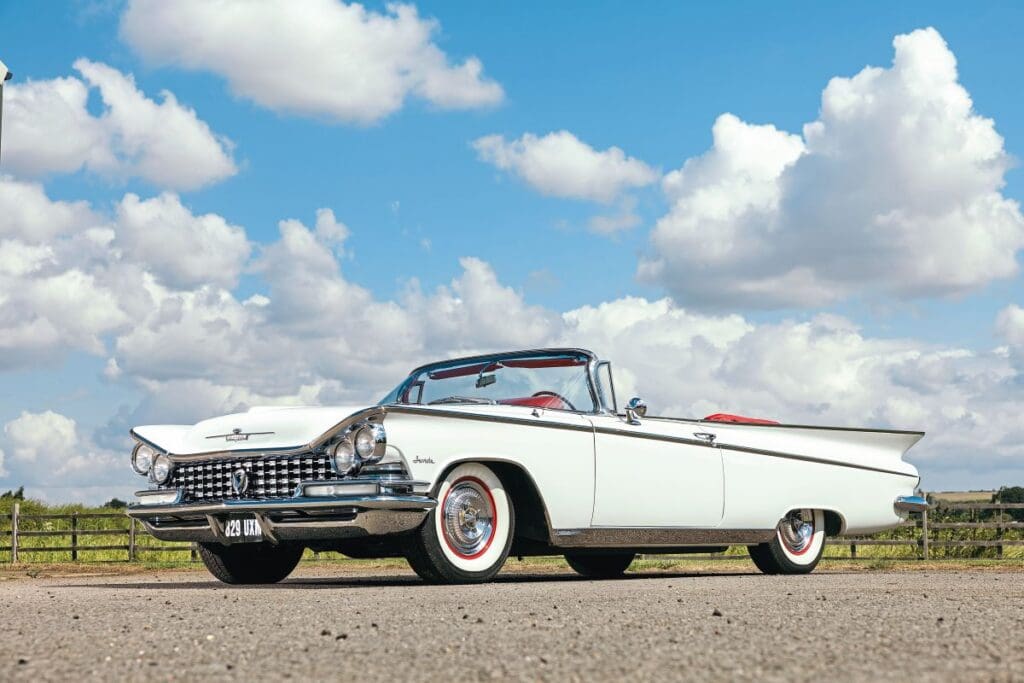
Words: Zack Stiling Photography: Gary Chapman
Nineteen fifty-nine was the year America grew up. If the Fifties ever seemed like it was too good to last, it was. As teenage innocence died with Buddy Holly, Bob Dylan started singing of trouble and strife. The Cold War in Cuba got much hotter and following the 1958 recession, Detroit’s car-makers were forced to realise that, for many consumers, economy might be a more important consideration than glamour.
Enjoy more Classic American reading in the monthly magazine.
Click here to subscribe & save.
Fortunately, the American automotive dream had no intention of fading away quietly, and 1959 marked the pinnacle of the chrome-and-fins era, with General Motors leading the charge. The ’59 Cadillac is today held up as the ultimate symbol of the excess, optimism, imagination, prosperity and stylistic excellence which defined the era, but might it not be that the lesser-spotted Buick, with its low, crisp styling, was the year’s best-looking offering?

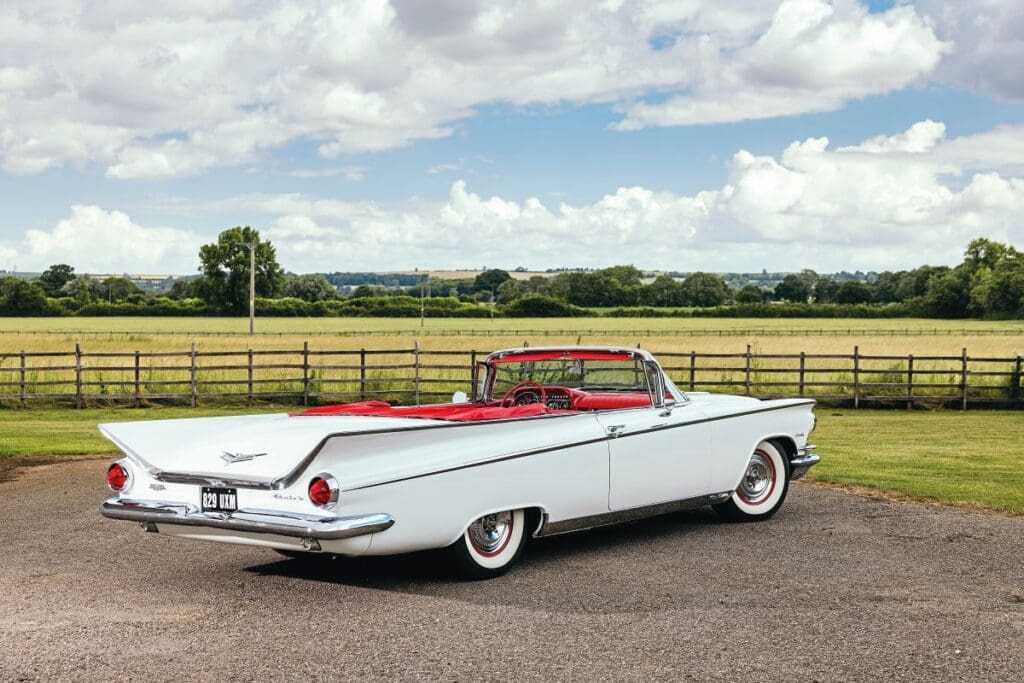
Buick really needed a show-stopper for 1959 because its sales had been steadily declining since 1955, from 737,000 down to just 240,000 for 1958. Because of the recession, 1958 was a dismal year for car sales generally, but Buick fared particularly badly. A lot of critics have blamed Buick’s misfortune on the ‘ugliness’ of the ’58 model. It was not ugly, but it was overstyled and overloaded now that consumers had to watch their money more carefully.
Whether the ’58 Buick was attractive or not is a moot point. The ’59 was undoubtedly beautiful, even majestic. Compared to the ’58, it was lithe and sleek, with an air of refinement and tasteful restraint, even with its very prominent tail fins. The new look was further distinguished from its predecessors by way of a new naming system in place of one which had stood for 20 years. The Special became the LeSabre, the Century became the Invicta, and the Super and Roadmaster became the Electra and Electra 225. All bar the LeSabre were given the brand-new 401cu in, 325bhp Nailhead V8 with a four-barrel carburettor.
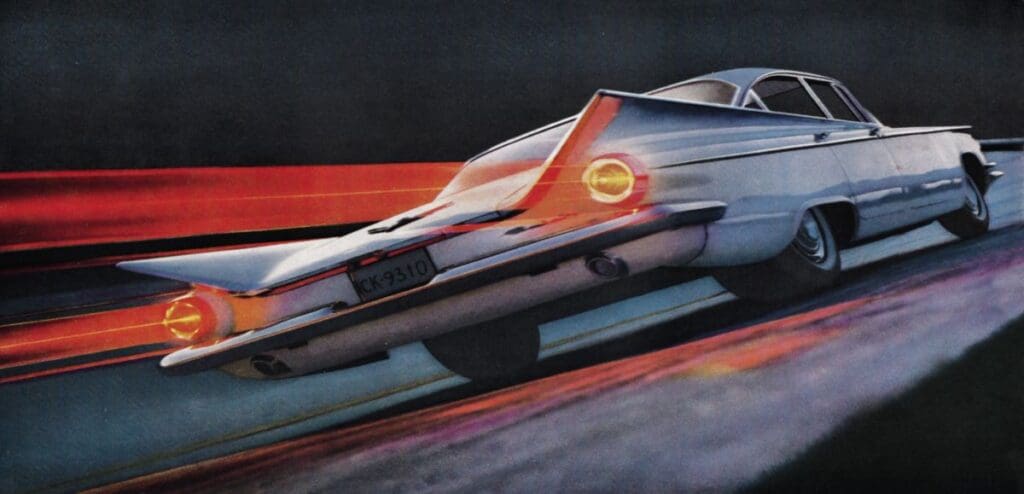
Barn-find Buick Invicta
Without doubt, the best-looking Buicks of them all were the convertibles, and this Invicta soft-top belongs to Jon Gillman, who is a big fan of the ’59s. In fact, this is his third, and it’s the culmination of a long-time love affair. He said: “I was into old cars even when I was a kid. I was buying Practical Classics when I was a teenager. I got into Minis and Mini racing, then when I got a bit of money I bought a Triumph TR6.”
The TR6 met with an unfortunate accident, but Jon put half his insurance payout towards restoring it and the other half towards buying something new. “I was looking at Auto Trader for something cheap and there was a ’59 Buick in Bradford. I went and bought it. It’s still about, a red two-door, and that’s how I got into Americans. Years went by and I bought a grey four-door Electra because it was better than the red one.”
While retrimming the Electra, Jon lost the door handle screws and got on the phone to an old friend, Dave Kopke, who also happened to be the owner of the Invicta convertible. “I said, ‘Can I look at your car because I’ve lost the screws and don’t know what they look like?’ He’d parked it in a shed and had fallen out of love with having old cars, so it was in a bit of a sorry state. I said, ‘What are you doing with it?’ and he said, ‘I’m thinking of selling it,’ so I bought it.”
So it was that and at the end of 2017, Jon became the Invicta’s third owner from new. It had been sold new through Muti Buick in Passaic, New Jersey, finished in the striking colour scheme of Lido Lavender with a white top and blue-grey upholstery. Its first owner was Walter Pitulej, who had migrated from Kalusz, Poland, to Garfield, a city neighbouring Passaic. It was a fantastically snazzy car for a young man like Mr Pitulej, who was then 29 years old, living in an apartment and working in the factory of the nearby Stull Engraving Company.
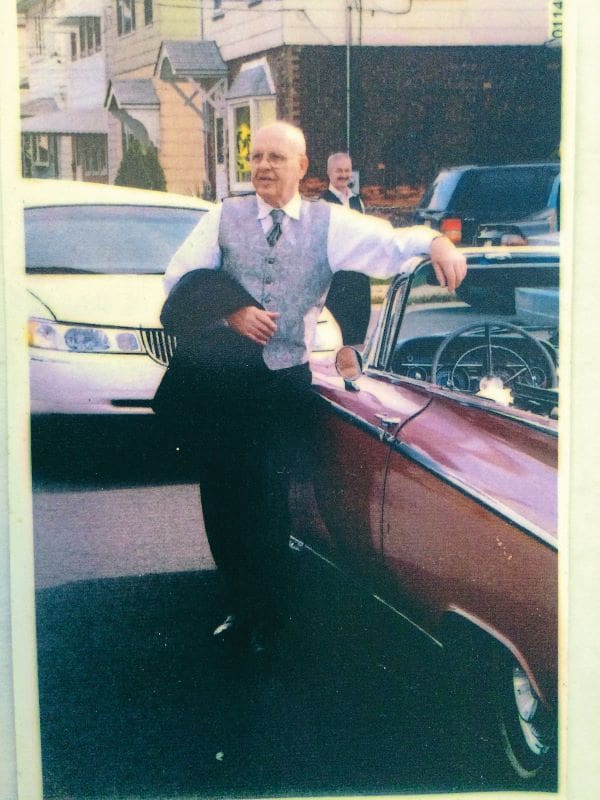
The base price for an Invicta convertible was $3620, but Pitulej handed over $4500 in cash for his, accounting for tax and the optional power-brakes, when he walked into the dealership and selected it from off the floor. Apart from twin exhausts and extra chrome trim, which this car does not have, there was little to specify in the way of extras – the Invicta was already an upmarket car, and the Dynaflow automatic and Wonder Bar radio were both standard.
In the Sixties, Pitulej married and started a family. His son Bob has kindly shared his memories of the Buick with us: “It was our everyday car for a family of four. We didn’t travel much besides Sunday church trips. Most fun was driving to the beach – Jones Beach on Long Island, New York. It was also a parade car one year in the annual Pulaski Day Parade in New York City. My best memories are of driving home after a day at Jones Beach when I and my sister were little. I would fall asleep in the back seat and my sister would sleep in my mother’s arms in the front seat. We slept for the one-and-a-half-hour ride home. My dad had great pride in keeping the car clean and immaculate after every use.”
Jon takes up the story of how it came to these shores: “Dave Kopke was very involved with the Buick-59.com chat room when the internet just started and got to be friends with Walter. When Walter decided he didn’t want to drive the car anymore, Dave bought it and imported it into the UK.”
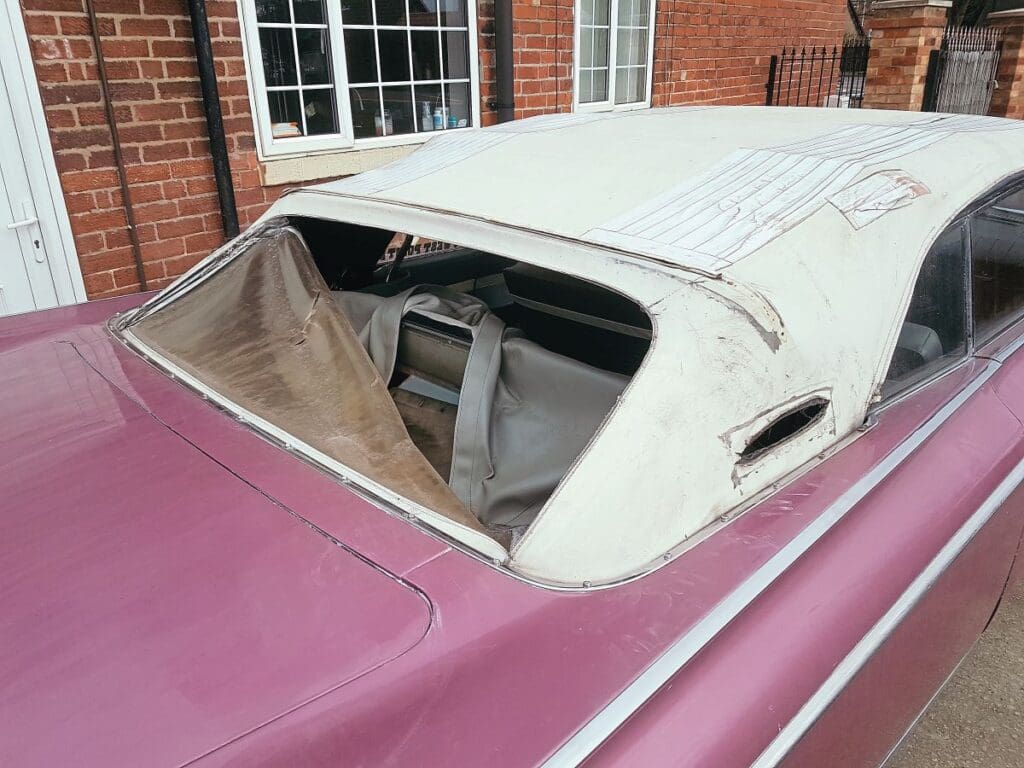
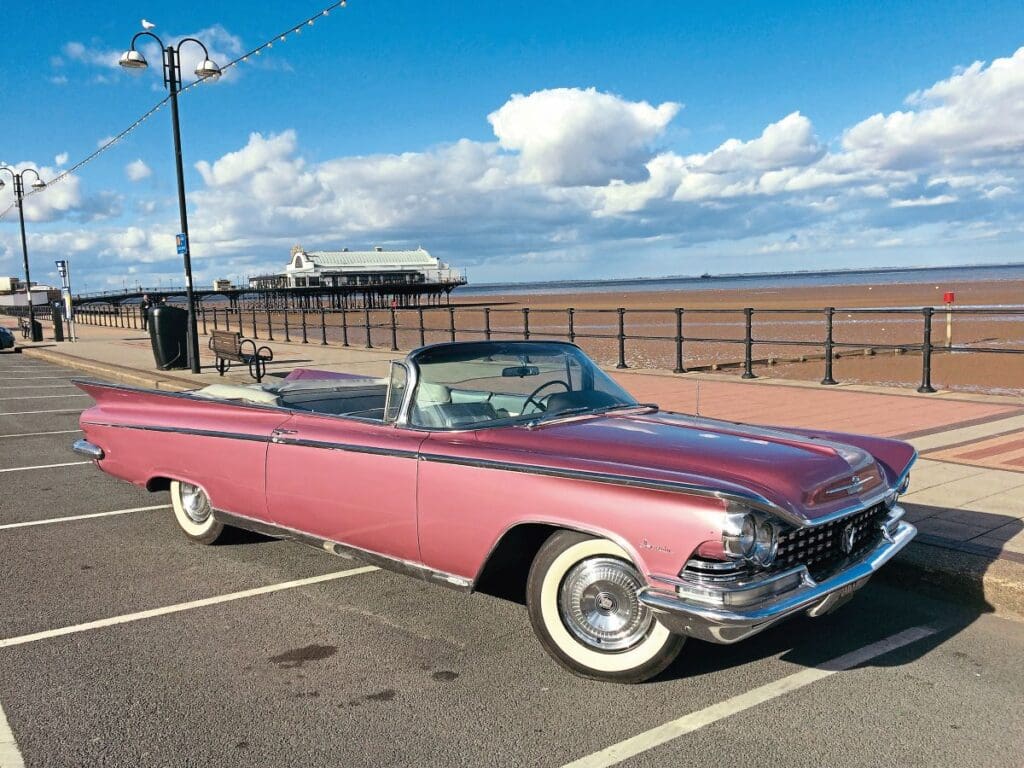
How John restored his 1959 Buick Invicta
Although the car was all-original when Jon bought it, it was very much the worse for wear. “It was a barn find with its wheels locked up. The paint was spider-webbed with rust and the interior was split and smelly. I machine polished it to try to make it look all right, but I put the can of polish on the soft-top and it fell through…”
To show that it had never been apart before, he found under the rear seat a ticket for a Regional Sokol Slet at the Sokol Camp, Boonton, New Jersey, from June 14, 1959. For the benefit of the unacquainted, Sokol is a Czech gymnastics movement and a Slet is one of its mass gatherings.
Faced with a car that needed fairly extensive renovation, Jon did some preliminary work himself. “I made it so it could drive. The lights hadn’t worked for years and it had a daytime-only MoT, so I got the lights working, got the top going up and down, cleaned it and polished it. From 20 yards it looked all right, and it was all right. Me and my wife drove it about.”

In 2020, however, Jon decided it deserved a full restoration. “I work in the Middle East so I decided to have it restored professionally. I’d never had one restored before, so it was a gift to myself. I’ve always done all the work myself apart from trimming and painting.” He did a lot of shopping around before entrusting the Invicta to Chris Gaunt of Chris’s Automotive Restoration Shop ([email protected]) near Doncaster. Jon was not sure that pink was his colour, however, and elected to have the Buick painted in Glacier White, with red upholstery; taking care to ensure that the finish was still correct to factory specification. Buick itself favoured this combination, using an identical car to grace the centrespread of its 1959 sales brochure.
The car was stripped back to a bare shell and completely reassembled, with the engine, gearbox and back axle being rebuilt by respective specialists, and the work was finished in late 2021.
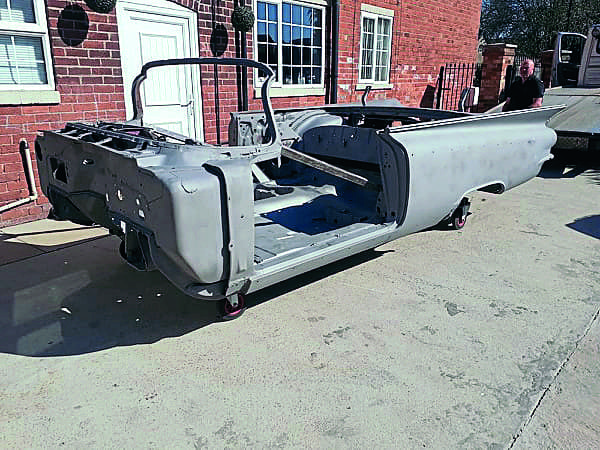
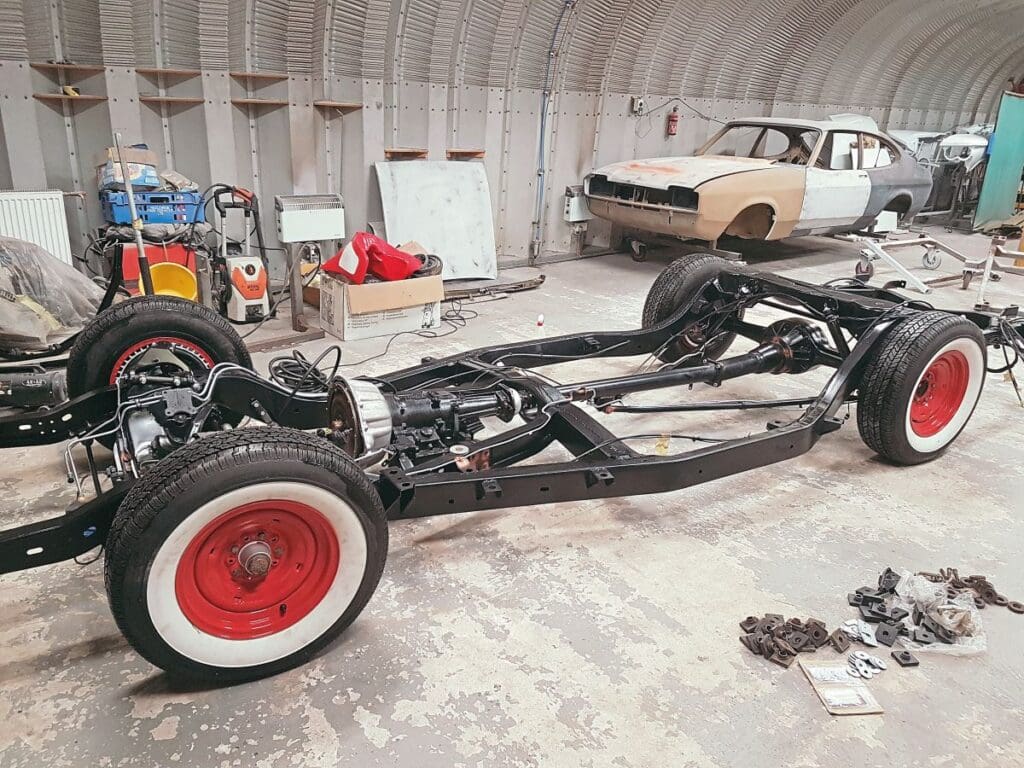
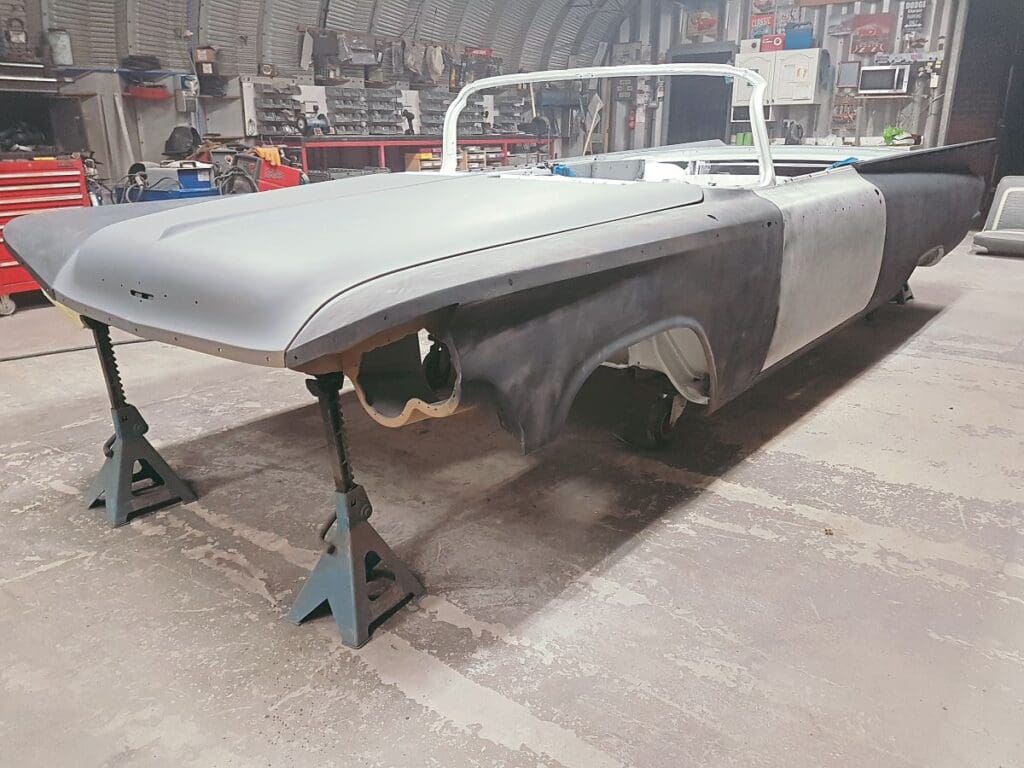
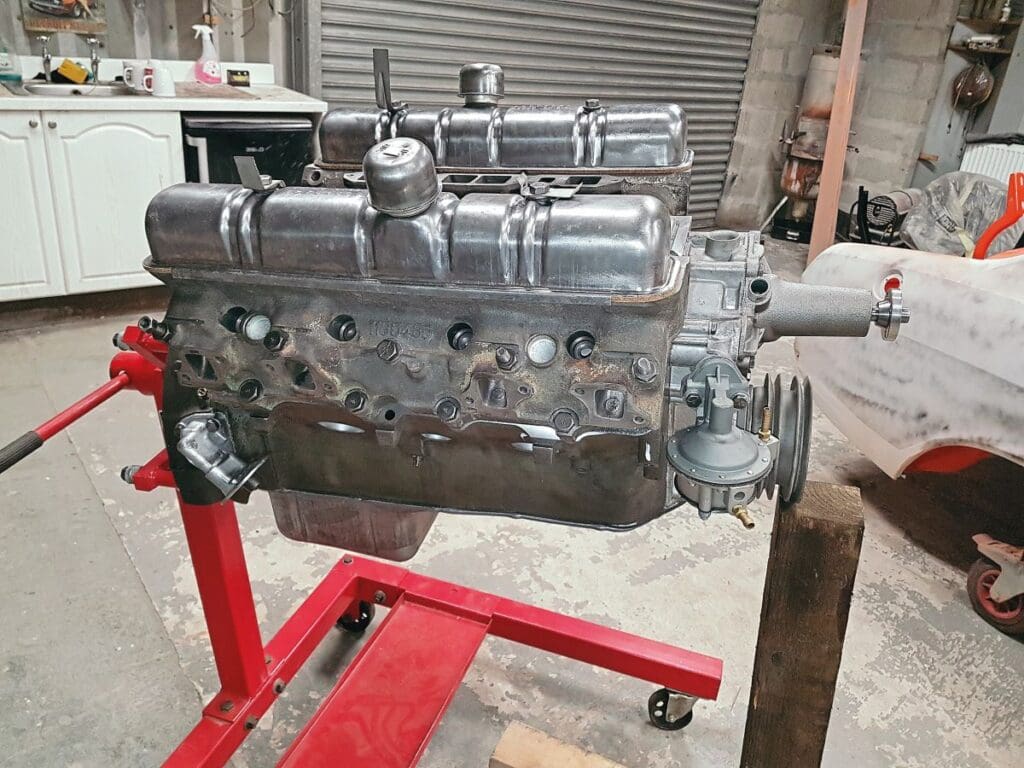
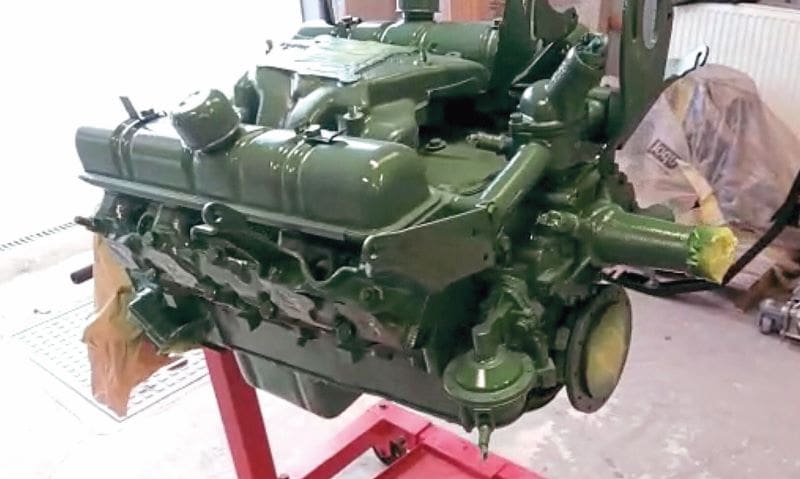
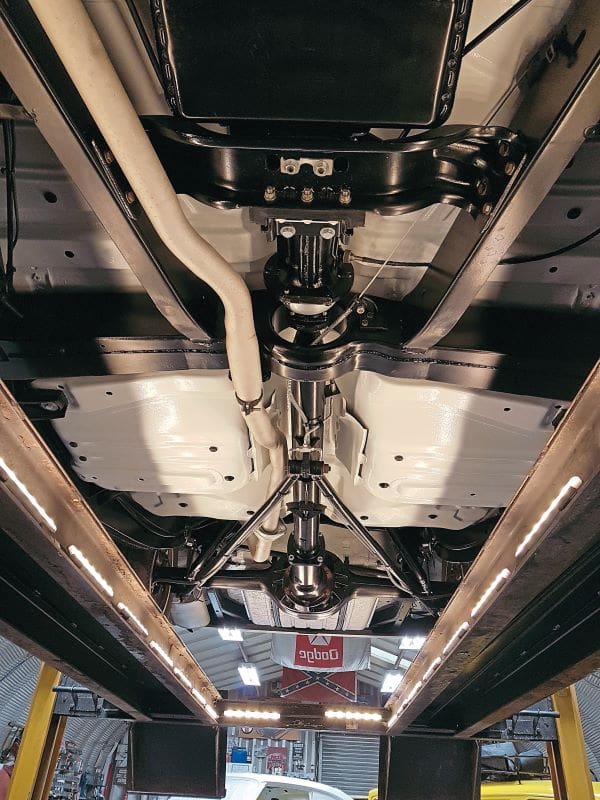
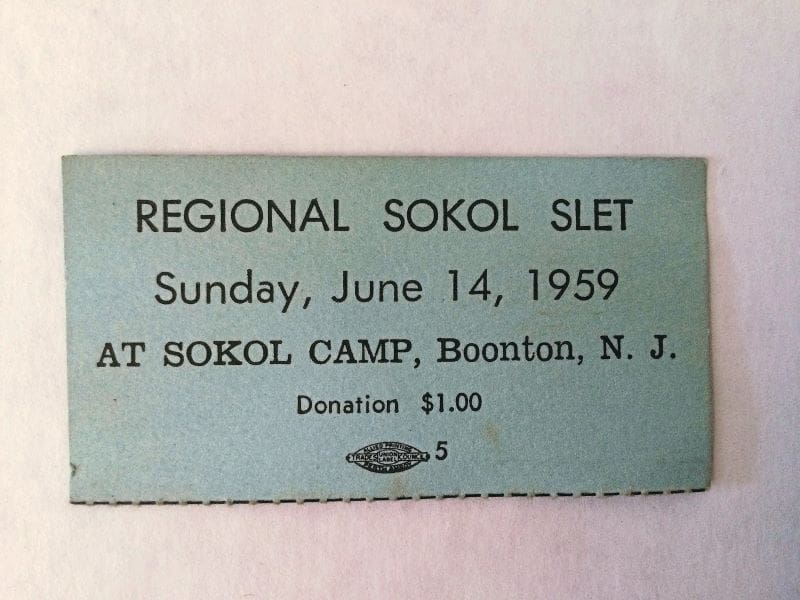
Following his first professional restoration, Jon is happy to impart some advice for anyone thinking of going down a similar route. “It took a lot of searching to find somebody to do it; a guy I could trust with my car. I wasn’t afraid to ask really challenging questions because it was going to cost a lot of money, so you’ve got to be really comfortable with the guy you’re giving the money to, but you’ve also got to listen to advice from the professionals. A lot of people give cars to restorers and come away unhappy because it takes a long time or costs more than they thought. You have to see the guy once a month, talk to them, see what they’re doing and agree with what they’re doing.
“I was already pretty knowledgeable about ’59 Buicks and you’ve got to know a lot about your car. There’s no point paying a professional to search eBay for brake pipes. If you’re searching eBay for American car parts, unless you change your delivery address to an American address you won’t see all the parts. If somebody’s selling, but isn’t prepared to export, unless you’ve got an American address you won’t see them. I’ve got a US postbox from a shipper. It’s amazing what else appears when you’ve got something like MyUS; it’s not just RockAuto out there.
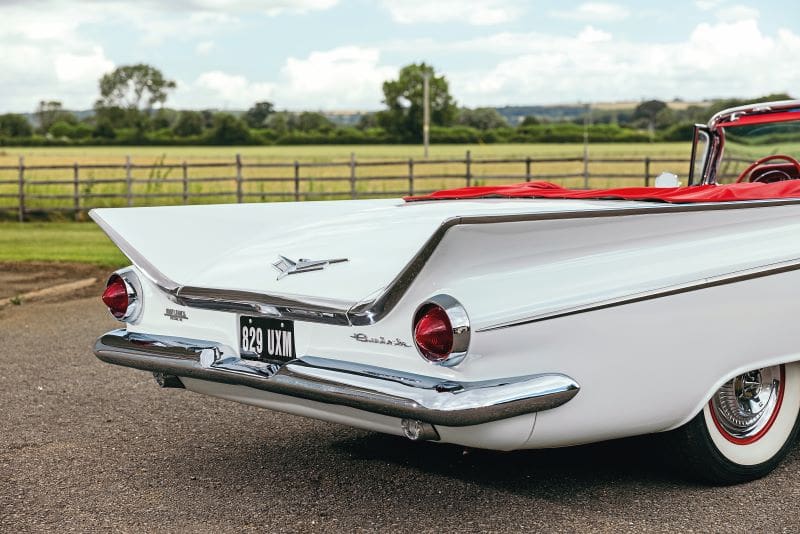
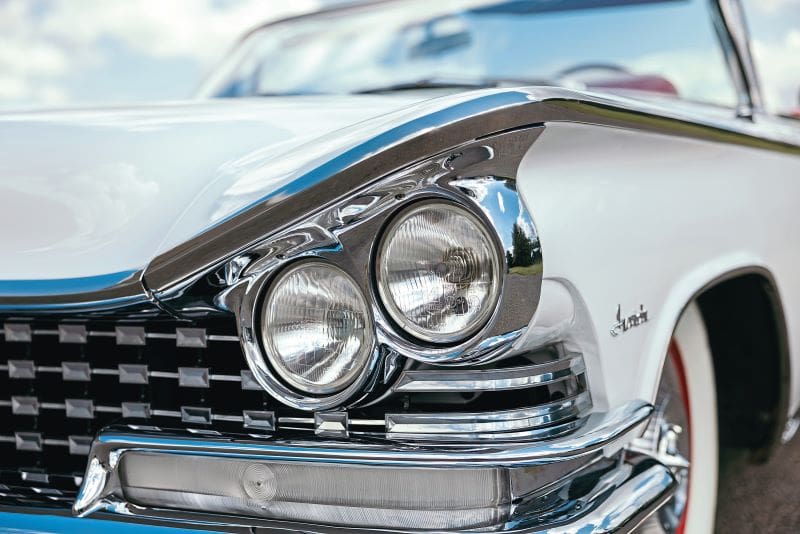
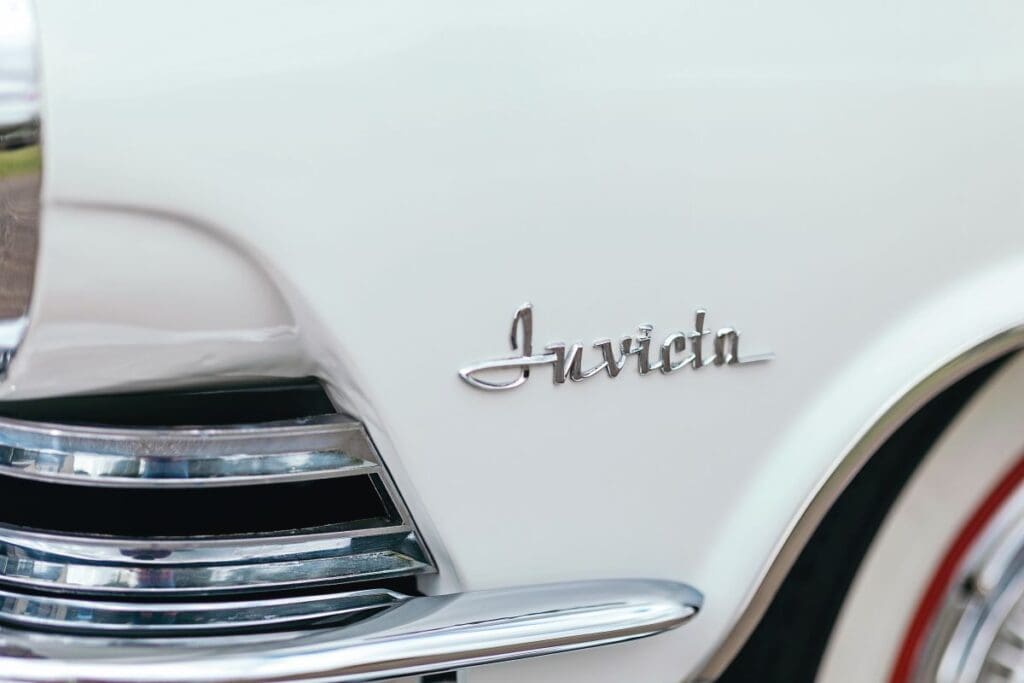
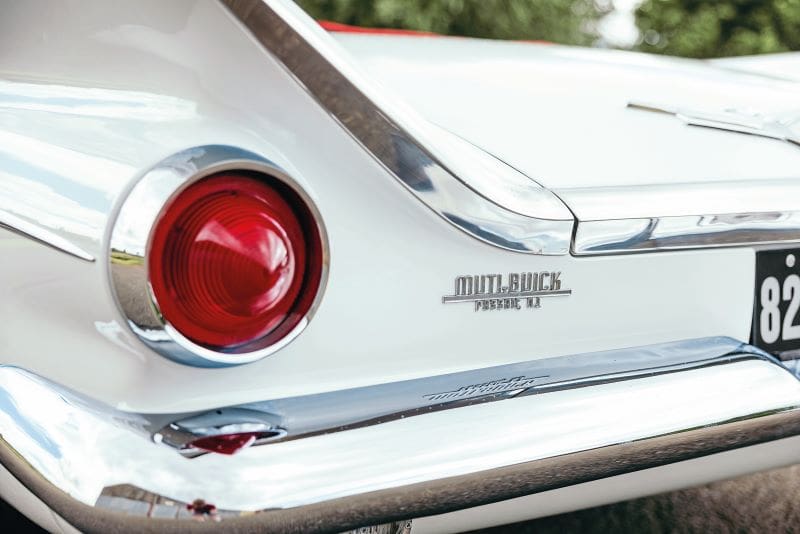
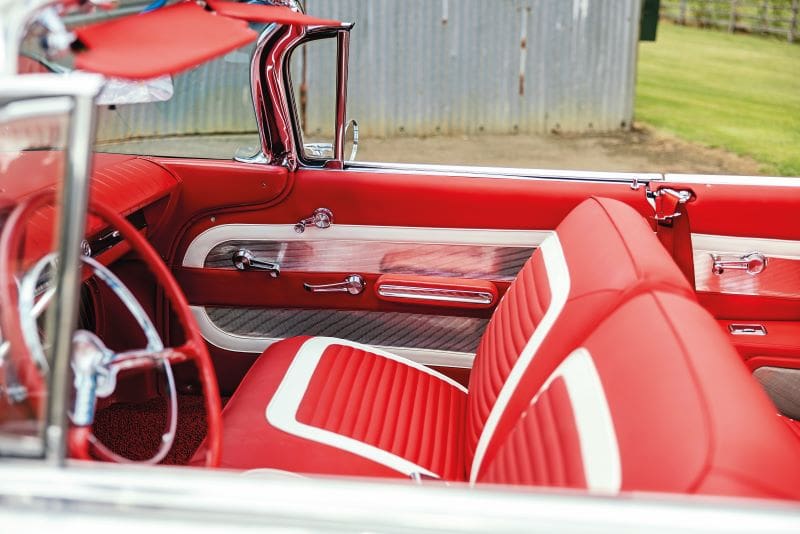
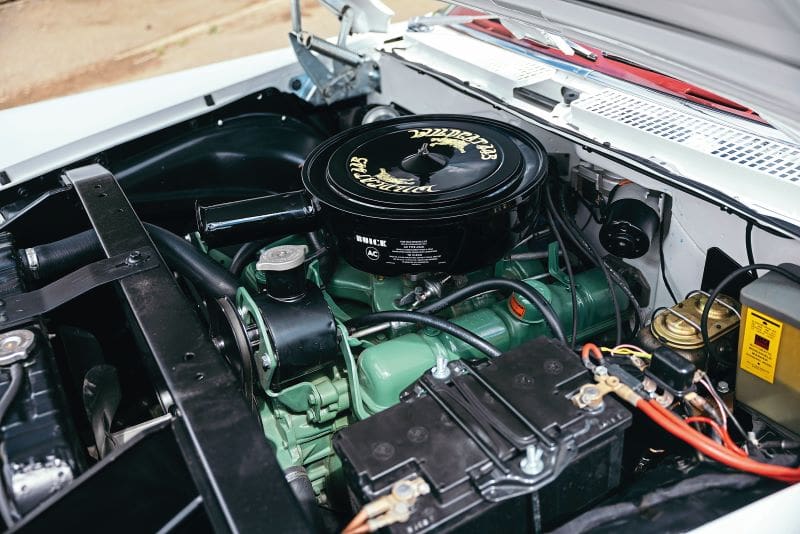
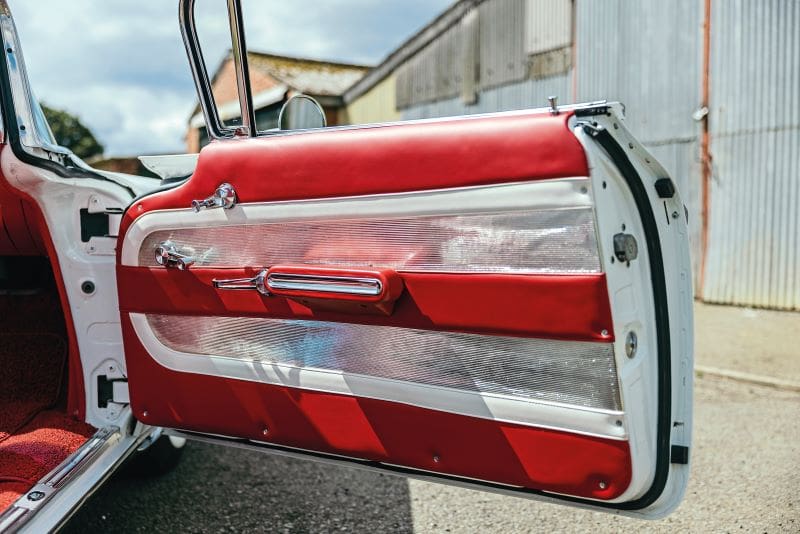
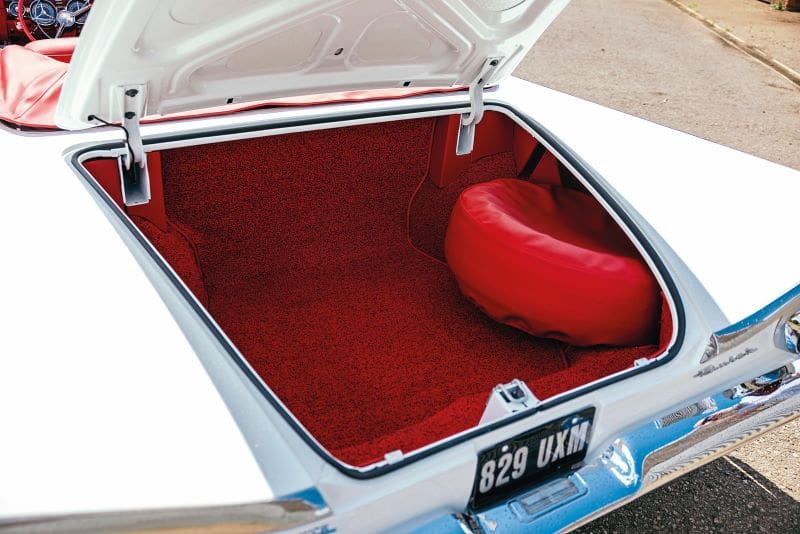
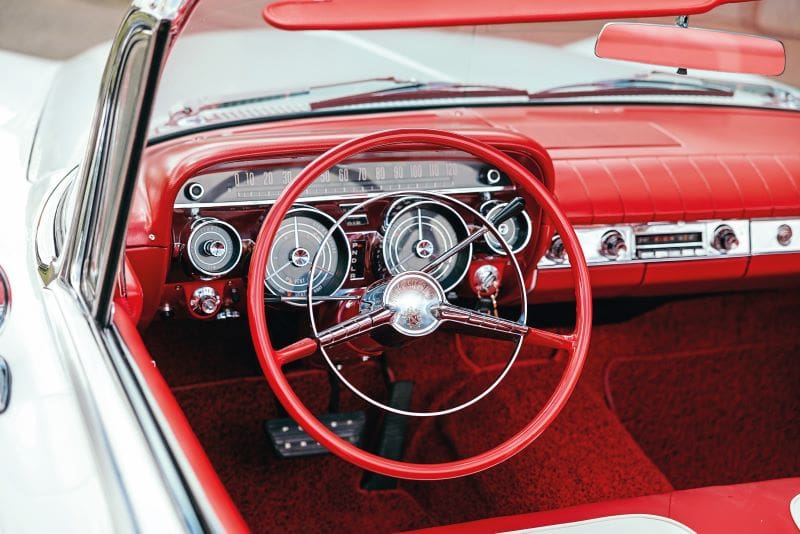
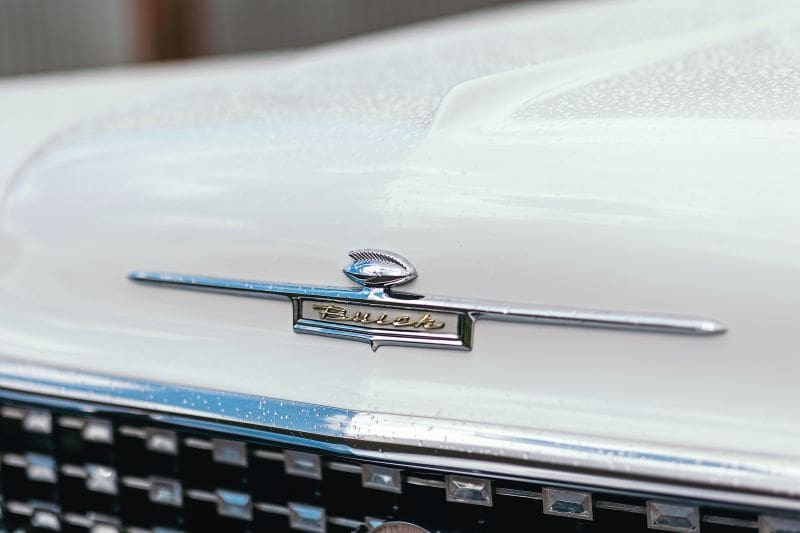
“With small suppliers you can find things you don’t think you’ll find. Getting parts across the pond can be challenging, but Ron Fenton at STS Imports (www.stsimports.co.uk/Tel. 01245 363800) is brilliant. All my engine components came from Matt Martin of Centerville Auto Repair (www.nailheadbuick.com/Tel. 001 530 272 1564), who’s a world expert in Nailhead Buicks. They all came from him to Ron’s warehouse in the US, then to me in the UK and then on to the engine builder. Stanwood Engineering in Bawtry (www.stanwoodengineering.co.uk/01302 710661) did the engine, they were really good, although I was the guy who got all the parts. Keep a record of everything. When you start, if you think it’s going to cost x, it’s going to cost twice x. I don’t know anybody who’s ever underspent on a restoration!
“When I got all the chrome rechromed and stainless repolished, I was standing in Chris’s shop looking at the door handles. They were pockmarked. I was thinking about rechroming, but with American cars you can get new ones. It might cost you £100 to rechrome them, but only $50 for new ones. With stuff that’s supposedly obsolete, like the diff bearings, an automotive supplier wanted $200 for them, but when I knew what bearing it was, I found them with a bearing supplier in Hull. There’s a big shipping industry and the boats are all old, so they stock old bearings. If I’d bought them from a specialist bearing supplier for ’59 Buicks, it would have cost me $200 per bearing, but instead it cost £35.”
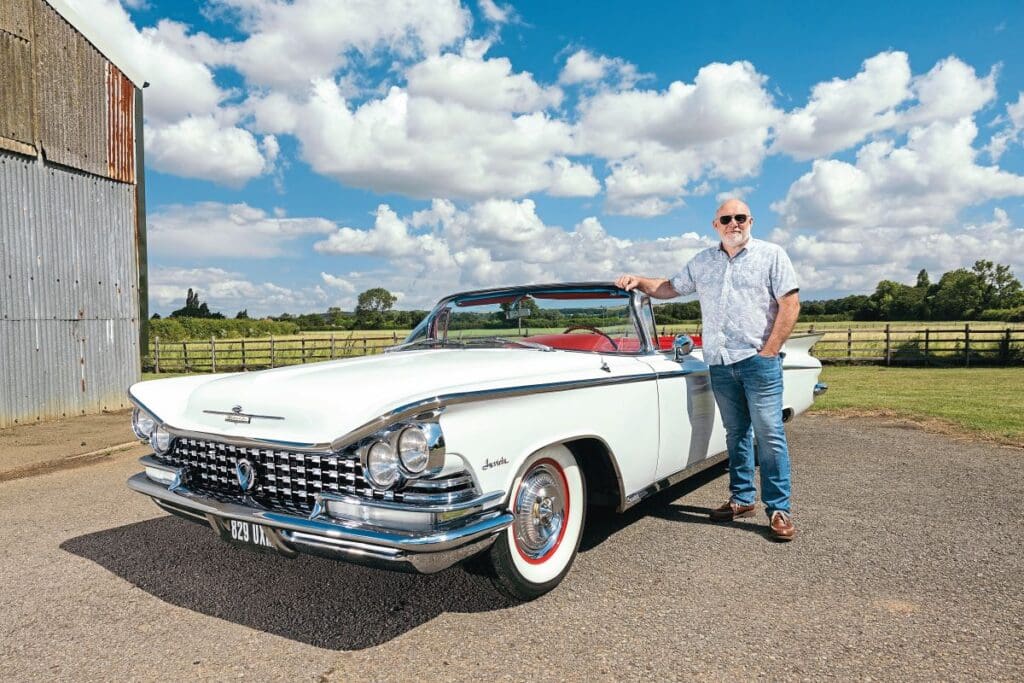
Life on the Road: Driving the restored 1959 Buick Invicta
Since its completion, Jon’s use of the Invicta has been enthusiastic but sparing, since he spends most of the year out of the country and has a small collection of other classics which all vie for his attention when he gets home. Having got used to driving three different ’59s, he says of the soft-top: “I’ve got a four-door, I had a two-door, and they’re pretty solid. This has got the typical convertible scuttle shake. It’s not as a rigid as the four-door, but you always hear that; it’s just what convertibles from history are like. The TR6 was the same. In terms of driving on the road, this year I went to the Le Mans Classic and it’ll cruise at the motorway legal limit without breaking a sweat. It does about 15 to 17mpg. The gearboxes are amazing. Some people say they’re troublesome, but I’ve never found that. The Nailhead engine is just lovely. It’s quiet and smooth. Being an old-fashioned automatic, it revs a bit when you floor it, but it’s a nice thing to cruise about in.”
For all that, the ’59 Buicks were well received, it would take some years for Buick’s sales to recover from their late Fifties slump. Total production for 1959 was nevertheless an improvement at 284,000 units, but the Invicta convertible has always been a rarity, with just 5447 built. Jon reckons there are about 26 1959 Buicks in Britain, making his Invicta convertible unique on these shores. It is a wonder that more haven’t been imported when it’s one of the loveliest cars of its era, but that just makes Jon’s cars all the more precious.
